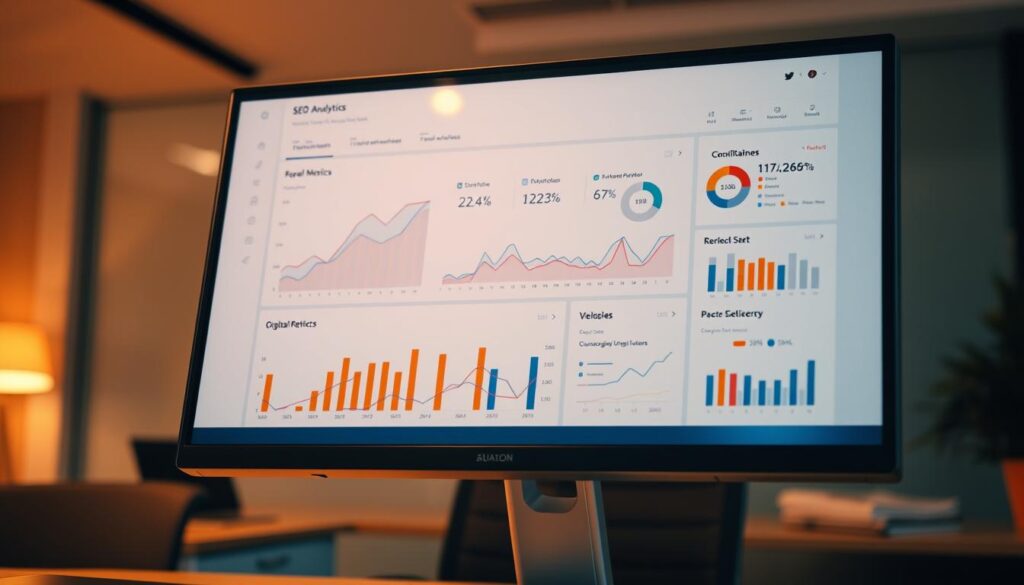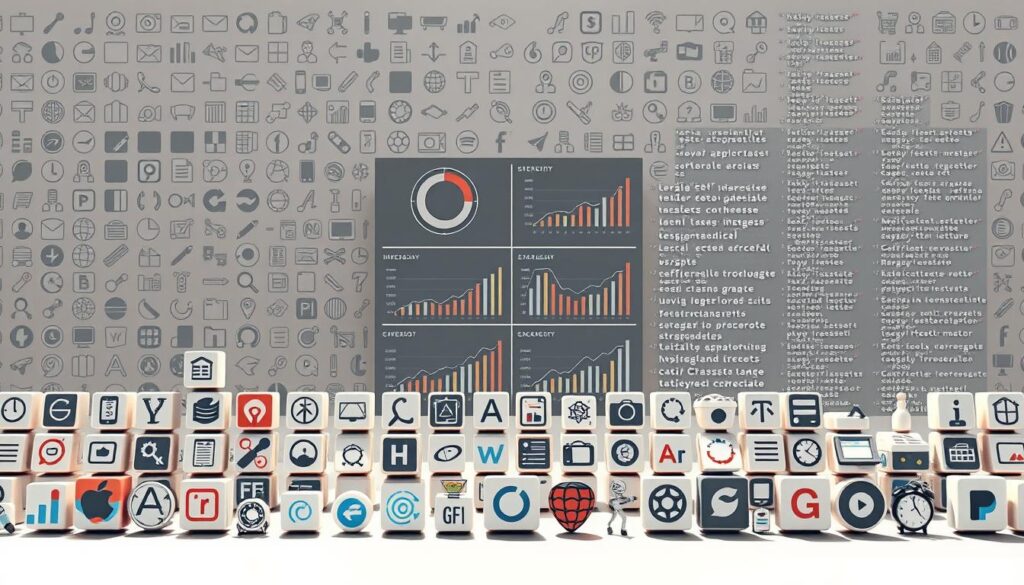Digital marketing agencies today grapple with rapidly shifting algorithms and intensifying competition. What worked yesterday often falters under new search engine requirements, creating pressure to adopt more advanced strategies. Scaling operations compounds these challenges, as manual workflows strain under growing client demands.
The gap between thriving agencies and those struggling widens based on technological adaptability. Integrated platforms that streamline reporting, automate repetitive tasks, and provide actionable insights become critical differentiators. For teams managing multiple campaigns, fragmented systems lead to inefficiencies that erode profitability.
Cost considerations further complicate decisions. Many organizations initially rely on basic solutions but face steep price hikes as their needs expand. This creates tension between budget constraints and the necessity for robust features that support comprehensive campaign management. Emerging AI-driven solutions now offer promising alternatives to traditional approaches.
Key Takeaways
- Algorithm updates require continuous adaptation in campaign strategies
- Scalable solutions become essential as client portfolios expand
- Integrated platforms reduce workflow fragmentation and manual errors
- Long-term cost efficiency outweighs initial savings from basic tools
- Strategic technology choices directly impact client retention rates
- Compatibility with evolving search engine requirements ensures sustainability
Overview of the SEO Tools Landscape

Advanced data analysis has become non-negotiable for agencies scaling their operational capacities. The market now offers four core types of solutions, each addressing specific aspects of search optimization workflows.
Audit-focused platforms diagnose technical issues like broken links or slow load times. These systems generate granular reports, helping teams prioritize fixes that improve site health. For example, they might flag mobile compatibility gaps affecting user experience.
Keyword research software identifies high-value terms competitors overlook. By analyzing search volume and difficulty scores, these tools guide content strategies toward untapped opportunities. Some solutions even predict seasonal trends using historical data patterns.
Rank tracking systems measure how specific pages perform across search engines. They provide daily updates on position changes, enabling swift adjustments to underperforming campaigns. Historical comparisons reveal whether algorithm updates impacted visibility.
All-in-one platforms combine these functions into unified dashboards. While convenient, their breadth sometimes sacrifices depth compared to specialized alternatives. Agencies must decide whether streamlined workflows outweigh potential gaps in niche analysis capabilities.
Understanding SEO Agentic Tools and Their Benefits

Intelligent systems now redefine how marketing teams approach search strategies. These platforms automate complex processes while generating actionable insights, allowing agencies to focus on strategic priorities rather than manual labor. By shifting from reactive adjustments to predictive modeling, they create sustainable growth frameworks.
Advanced platforms leverage machine learning to analyze historical patterns and forecast trends. This predictive capability helps teams allocate resources effectively, targeting high-impact opportunities before competitors react. One marketing director noted: “Our campaign success rates improved 40% after implementing systems that prioritize emerging search patterns.”
Key advantages include:
- Automated content optimization aligning with real-time algorithm changes
- Unified dashboards tracking technical health across multiple client properties
- Customizable reporting translating raw metrics into client-ready narratives
Such features eliminate time-consuming data reconciliation, reducing errors in multi-channel campaigns. Agencies using these solutions report 28% faster project turnaround times and 35% higher client renewal rates, according to recent industry benchmarks.
The right platform becomes a force multiplier, enabling smaller teams to manage enterprise-level portfolios without compromising service quality. This operational leverage often determines which agencies secure long-term client partnerships in competitive markets.
Evaluating SEO Tools for Agency Success

Selecting the right digital solutions requires a strategic approach tailored to operational demands. Agencies must balance technical capabilities with budget realities while ensuring systems adapt to evolving client needs. This evaluation process hinges on two core pillars: functionality alignment and financial sustainability.
Criteria for Effective Tools
Multi-client management stands as a foundational requirement. Platforms enabling instant account switching with dedicated workspaces prevent data crossover across campaigns. One digital strategist emphasized: “Centralized dashboards reduced our onboarding time by 60% while improving accuracy.”
White-label reporting transforms raw metrics into branded narratives. Customizable templates with agency logos strengthen client trust through professional presentation. Automated technical audits further streamline operations by identifying priority fixes for site health improvements.
Understanding Pricing and Feature Sets
Scalable pricing models prove critical for growing teams. Solutions charging per user often become cost-prohibitive compared to flat-rate options with unlimited seats. Feature accessibility tiers require careful analysis—advanced link-building tools might reside in premium packages.
Integration costs frequently go overlooked. Systems requiring additional connectors for CRM or analytics platforms can inflate budgets. Proactive agencies prioritize solutions with native API access to maintain workflow efficiency without hidden expenses.
Key Features to Look for in SEO Software for Agencies

Modern agencies require platforms that centralize campaign oversight while adapting to diverse client needs. Core functionalities must address both technical precision and strategic scalability, ensuring teams maintain competitive advantage across multiple projects.
| Feature | Benefit | Critical for |
|---|---|---|
| Unified Dashboards | Centralizes account management | Multi-client operations |
| Intent Analysis | Identifies high-value content opportunities | Keyword strategy development |
| Automated Audits | Prioritizes site health improvements | Technical optimization |
| White-Label Reports | Strengthens client communication | Brand consistency |
Advanced platforms excel when offering granular control over localized campaigns. Geographic tracking modules enable precise adjustments for businesses targeting specific regions. Integration with existing workflows reduces friction during campaign launches.
Permission systems prove vital as teams expand. Tiered access ensures junior members focus on assigned tasks without compromising sensitive data. For agencies exploring advanced automation, reviewing the best AI agents helps future-proof tech stacks against evolving market demands.
In-Depth “SEO agentic tools comparison” Analysis

Effective evaluation frameworks separate leading platforms from basic solutions in competitive markets. Systematic assessments examine core functionalities like keyword research precision and audit depth across varying operational scales. These metrics reveal whether systems adapt to complex campaign demands or crumble under multi-project loads.
Performance benchmarking starts with data accuracy verification. Reliable platforms update metrics hourly while maintaining expansive databases for cross-regional analysis. One agency reported “35% fewer strategy revisions after switching to systems with real-time rank tracking.”
User experience directly impacts team productivity. Solutions with intuitive dashboards and drag-and-drop workflows reduce training time by 50% compared to complex interfaces. Customizable workspaces prove essential for managing diverse client portfolios efficiently.
Scalability assessments must address hidden limitations. Some enterprise-level solutions restrict advanced features to premium tiers, creating unexpected cost escalations. Flat-rate pricing models often provide better long-term value for growing teams.
Integration capabilities determine workflow efficiency. Platforms with native API connections eliminate manual data transfers between CRMs and analytics suites. Automated reporting features in AI-enhanced platforms save 12+ hours weekly through scheduled client updates.
Strategic analysis ultimately balances technical prowess with operational practicality. Agencies prioritizing adaptable systems with white-label reporting and granular permission controls typically achieve 27% higher client retention rates than those using fragmented toolsets.
Detailed Product Roundup: SE Ranking Review
Marketing teams seeking scalable solutions find SE Ranking’s platform adapts seamlessly to expanding client demands. Its architecture supports agencies managing diverse campaigns through centralized controls and granular customization options.
Outstanding Features and Capabilities
The Business plan tiers ($259-$599/month) remove project limits while offering full white-label reporting. Custom domain branding lets agencies present dashboards as proprietary systems. Daily rank tracking across 800+ search engines delivers precise performance metrics with historical comparisons.
Technical audits analyze 115+ parameters, generating prioritized fix lists for client sites. The Lead Generator Widget embeds automated site scanners on agency websites, capturing prospect data during free audits. For content teams, AI-enhanced platforms integrate directly, streamlining creation and optimization workflows.
Pros & Cons for Agency Use
Advantages:
- Unlimited projects across all pricing tiers
- API access enables custom integrations
- Five manager seats included, expandable at $20/month
Considerations:
- Agency Pack add-on required for advanced white-labeling ($50/month)
- Historical data limited to six months in base plans
With a 14-day trial and 20% annual discounts, teams can test capabilities risk-free. The platform’s balance of depth and usability makes it particularly effective for mid-sized agencies scaling operations.
Detailed Product Roundup: Semrush Review
Platforms offering comprehensive analytics suites dominate discussions among marketing professionals. Semrush stands out with its extensive feature set designed for multi-layered campaign management. Agencies benefit from its scalable architecture, which adapts to both niche projects and enterprise-level demands.
Comprehensive Keyword & Rank Tracking
Semrush’s database houses 25+ billion keywords and 43 trillion backlinks, providing unmatched market intelligence. The system identifies commercial intent patterns and content gaps competitors overlook. Daily rank tracking spans multiple search engines, flagging keyword cannibalization issues that could dilute campaign effectiveness.
Local map ranking analysis helps businesses targeting specific regions optimize visibility. Technical audits assess 140+ parameters, prioritizing fixes based on potential traffic impact. This depth enables teams to allocate resources efficiently while maintaining compliance with evolving search requirements.
Agency-Specific Tools and Integrations
Beyond core features, Semrush’s Agency Growth Kit ($69+/month) streamlines client management. Custom portals allow secure collaboration, while lead generation tools simplify prospect outreach. Integrated PPC analysis reveals paid search strategies competitors employ, enabling hybrid marketing approaches.
Pricing structures require careful evaluation. The Guru plan ($249.95/month) suits mid-sized teams handling 15 projects, while the Business tier ($499.95/month) supports 40 campaigns. Additional users cost $45-100/month—a critical factor for growing agencies. Those exploring video-centric optimization can integrate findings into broader content strategies.
A 7-day trial lets teams test capabilities risk-free, with annual commitments offering 17% savings. This balance of immediate functionality and long-term scalability makes Semrush particularly effective for data-driven agencies focused on measurable client outcomes.
Detailed Product Roundup: Ahrefs Review
AhrefsBot’s massive web-crawling capacity positions this platform as a data powerhouse. Processing 5 million pages per minute, it maintains one of the freshest indexes in the industry. With 16.6 billion crawled pages and keyword coverage across 217 regions, agencies gain precise insights for global campaigns.
The Site Explorer dissects backlink profiles with surgical precision. It identifies toxic links draining domain authority while revealing competitors’ acquisition strategies. For content teams, the Content Gap tool uncovers untapped keyword opportunities where rivals outperform client sites.
Ahrefs’ pricing structure scales with agency growth. The Advanced tier ($449/month) supports 50 projects, while Enterprise plans ($1,499+) offer custom limits. Annual billing cuts costs by 17%, though seat additions require separate fees. Teams needing comprehensive datasets will find value in its 28.7 billion filtered keywords and click-through rate analytics.
This platform excels for agencies prioritizing backlink intelligence and competitive benchmarking. Its balance of depth and usability makes it particularly effective for technical audits and international strategy development. When accuracy matters, Ahrefs delivers actionable insights without workflow bottlenecks.







